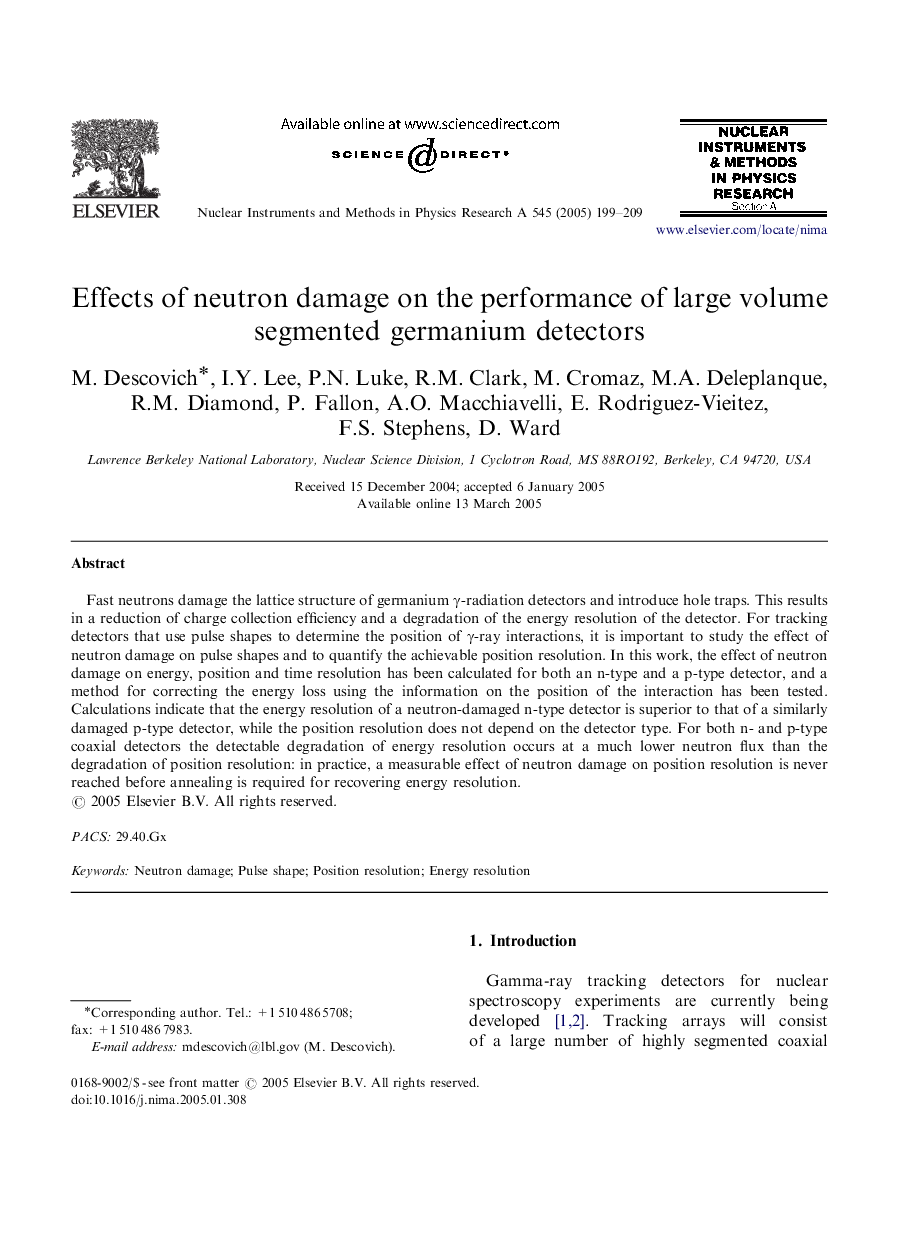| Article ID | Journal | Published Year | Pages | File Type |
|---|---|---|---|---|
| 9845393 | Nuclear Instruments and Methods in Physics Research Section A: Accelerators, Spectrometers, Detectors and Associated Equipment | 2005 | 11 Pages |
Abstract
Fast neutrons damage the lattice structure of germanium γ-radiation detectors and introduce hole traps. This results in a reduction of charge collection efficiency and a degradation of the energy resolution of the detector. For tracking detectors that use pulse shapes to determine the position of γ-ray interactions, it is important to study the effect of neutron damage on pulse shapes and to quantify the achievable position resolution. In this work, the effect of neutron damage on energy, position and time resolution has been calculated for both an n-type and a p-type detector, and a method for correcting the energy loss using the information on the position of the interaction has been tested. Calculations indicate that the energy resolution of a neutron-damaged n-type detector is superior to that of a similarly damaged p-type detector, while the position resolution does not depend on the detector type. For both n- and p-type coaxial detectors the detectable degradation of energy resolution occurs at a much lower neutron flux than the degradation of position resolution: in practice, a measurable effect of neutron damage on position resolution is never reached before annealing is required for recovering energy resolution.
Related Topics
Physical Sciences and Engineering
Physics and Astronomy
Instrumentation
Authors
M. Descovich, I.Y. Lee, P.N. Luke, R.M. Clark, M. Cromaz, M.A. Deleplanque, R.M. Diamond, P. Fallon, A.O. Macchiavelli, E. Rodriguez-Vieitez, F.S. Stephens, D. Ward,
